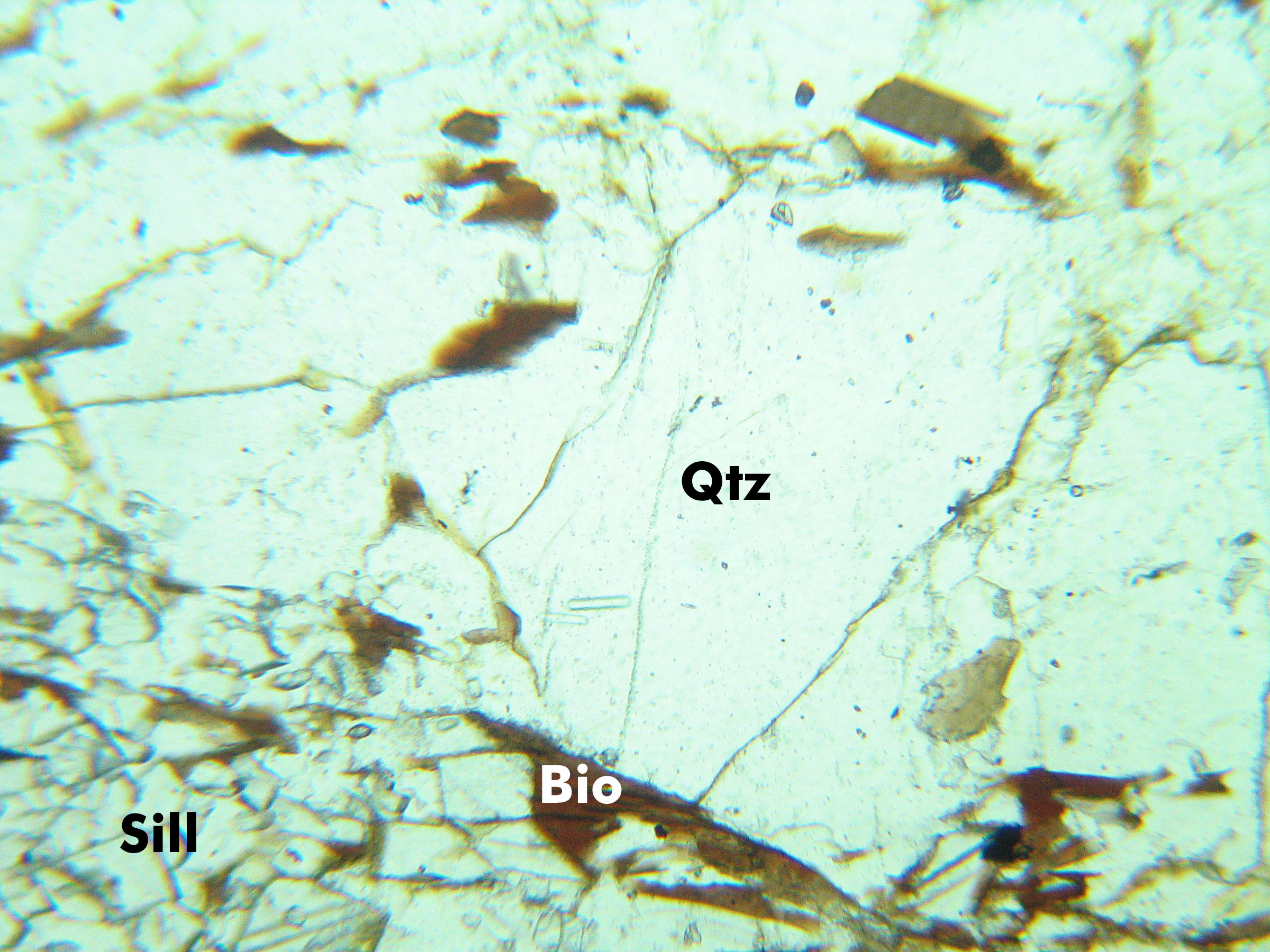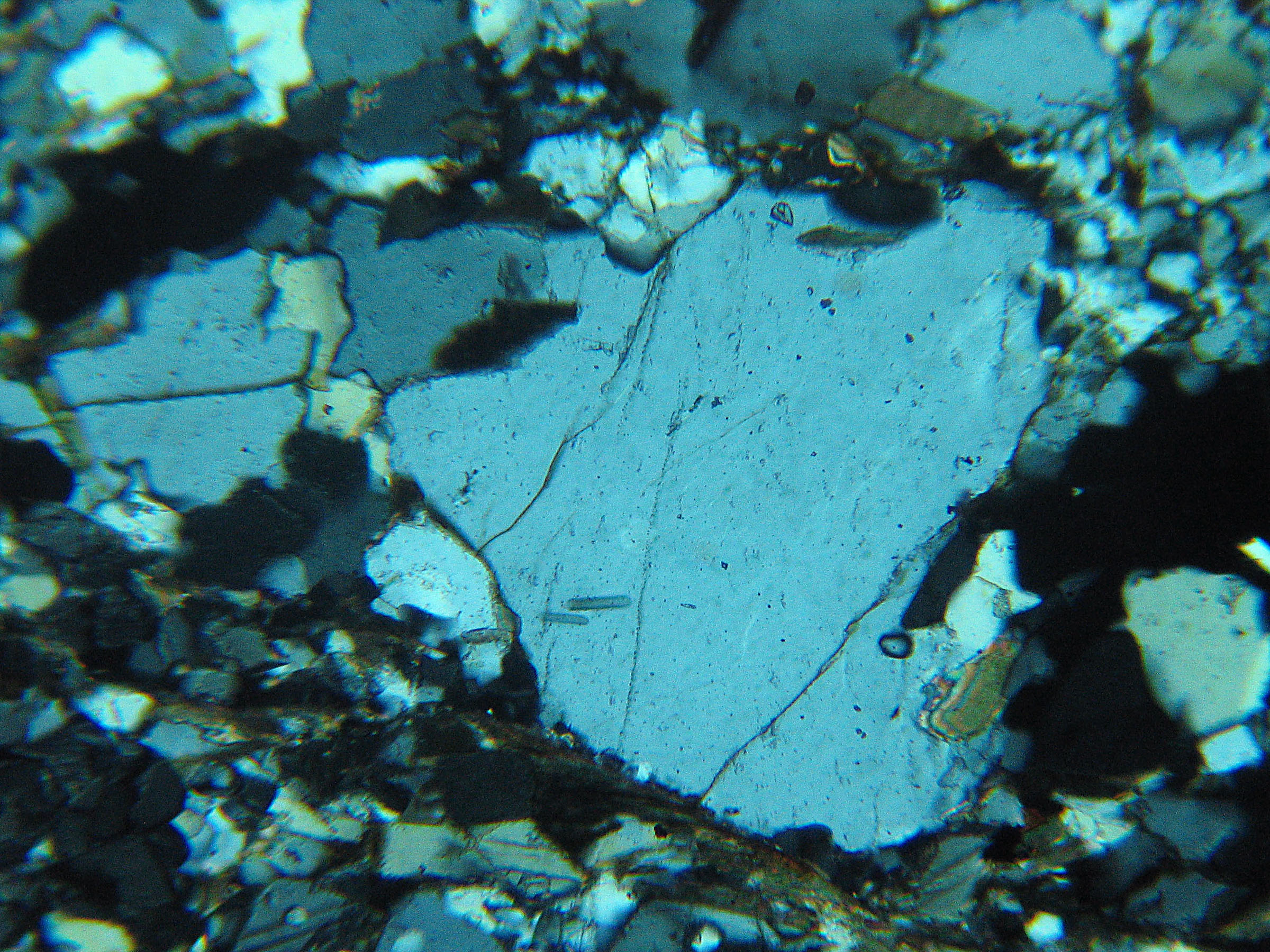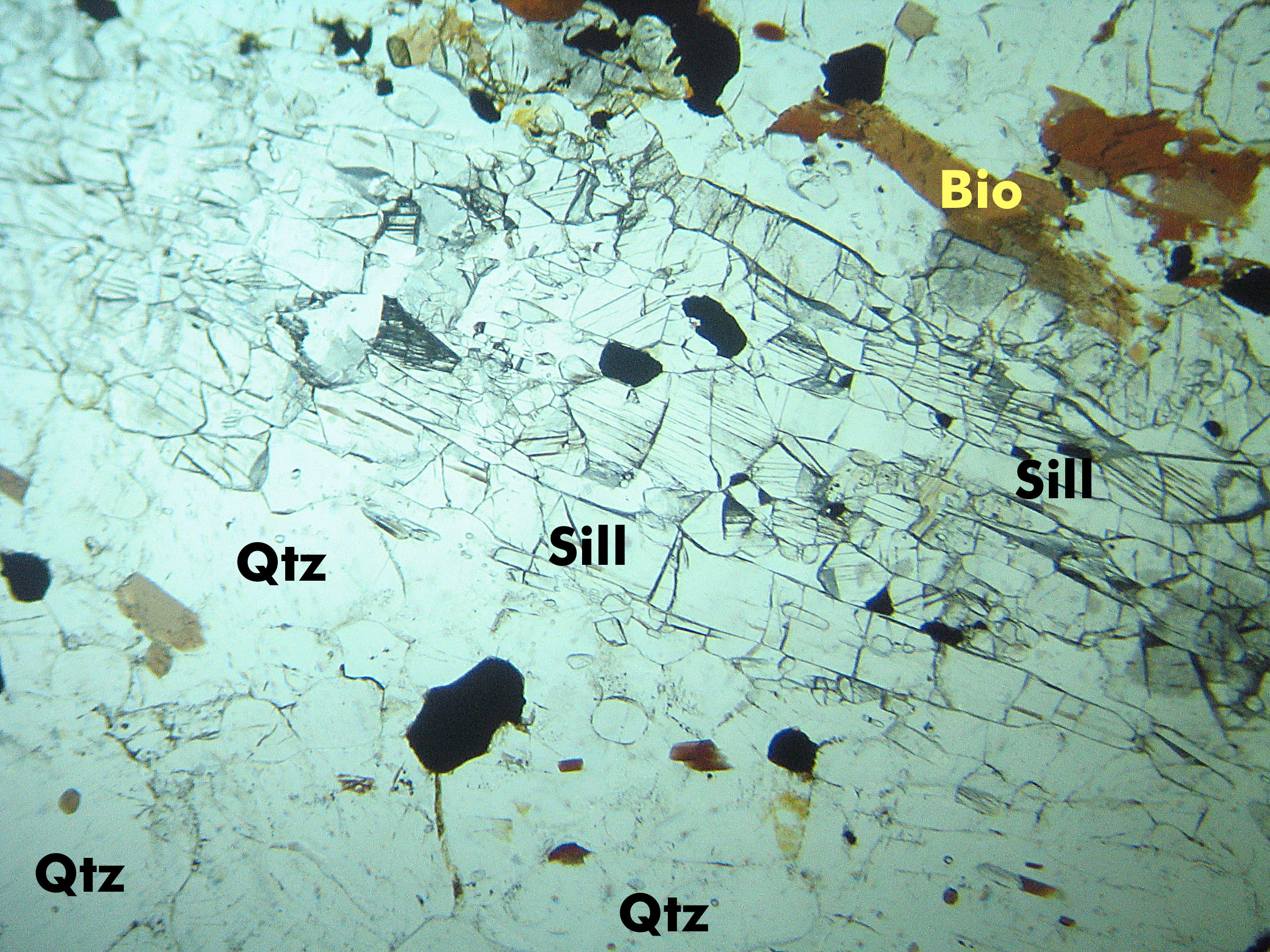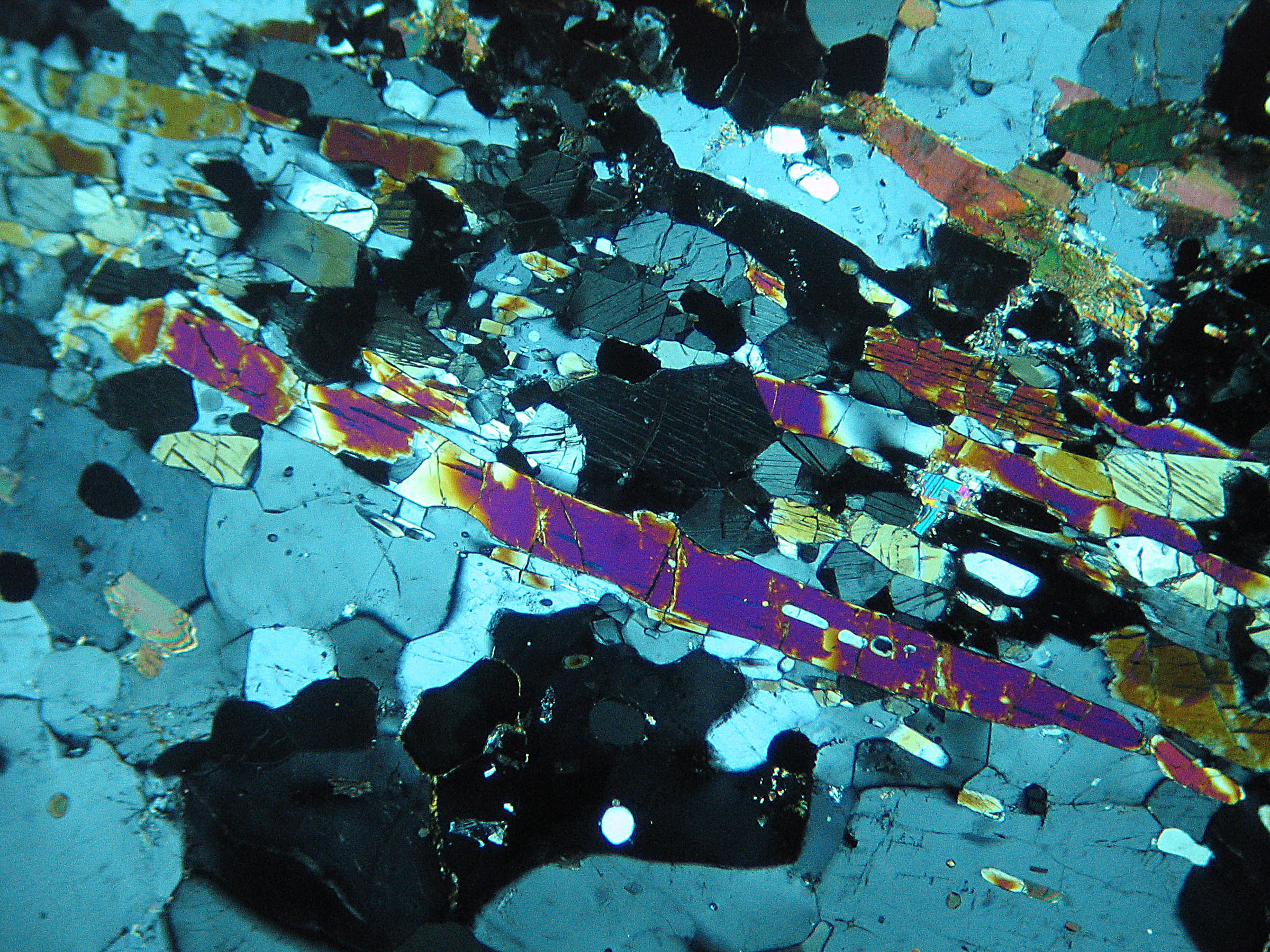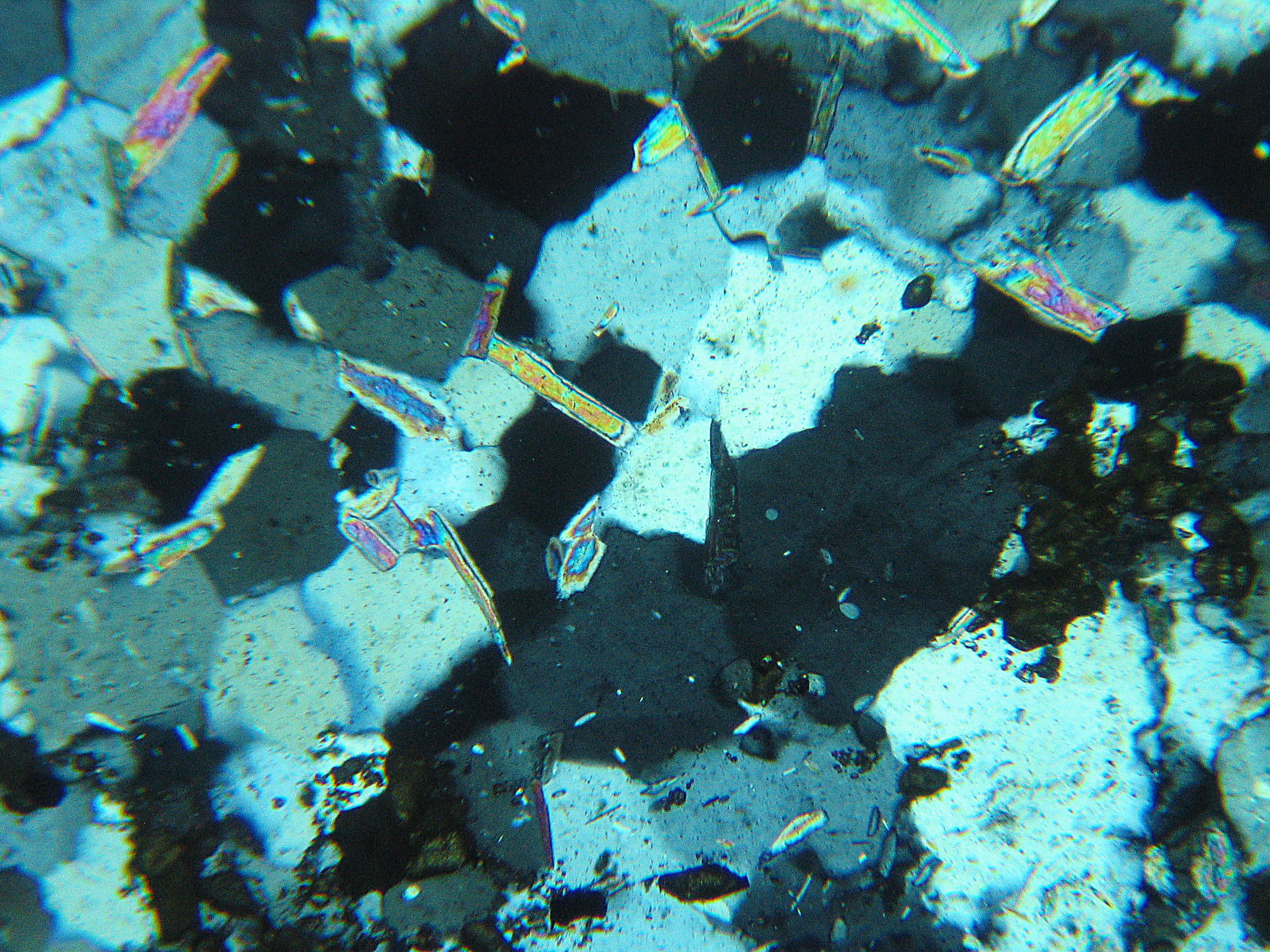Quartz and Plagioclase in a Rhyolite Porphyry


Here we see large phenocrysts of quartz and plagioclase in a matarix of finer quartz and K-feldspar. The largest grain is quartz and appears to be split along a fracture in the XP view. Many other, smaller, quartz grains are also present. A single large grain of plagioclase can be identified by its zebra-stripe twins (XP). Note that in the PP view, the large quartz and feldspar phenocrysts appear to be much less altered than the finer grained groundmass.


